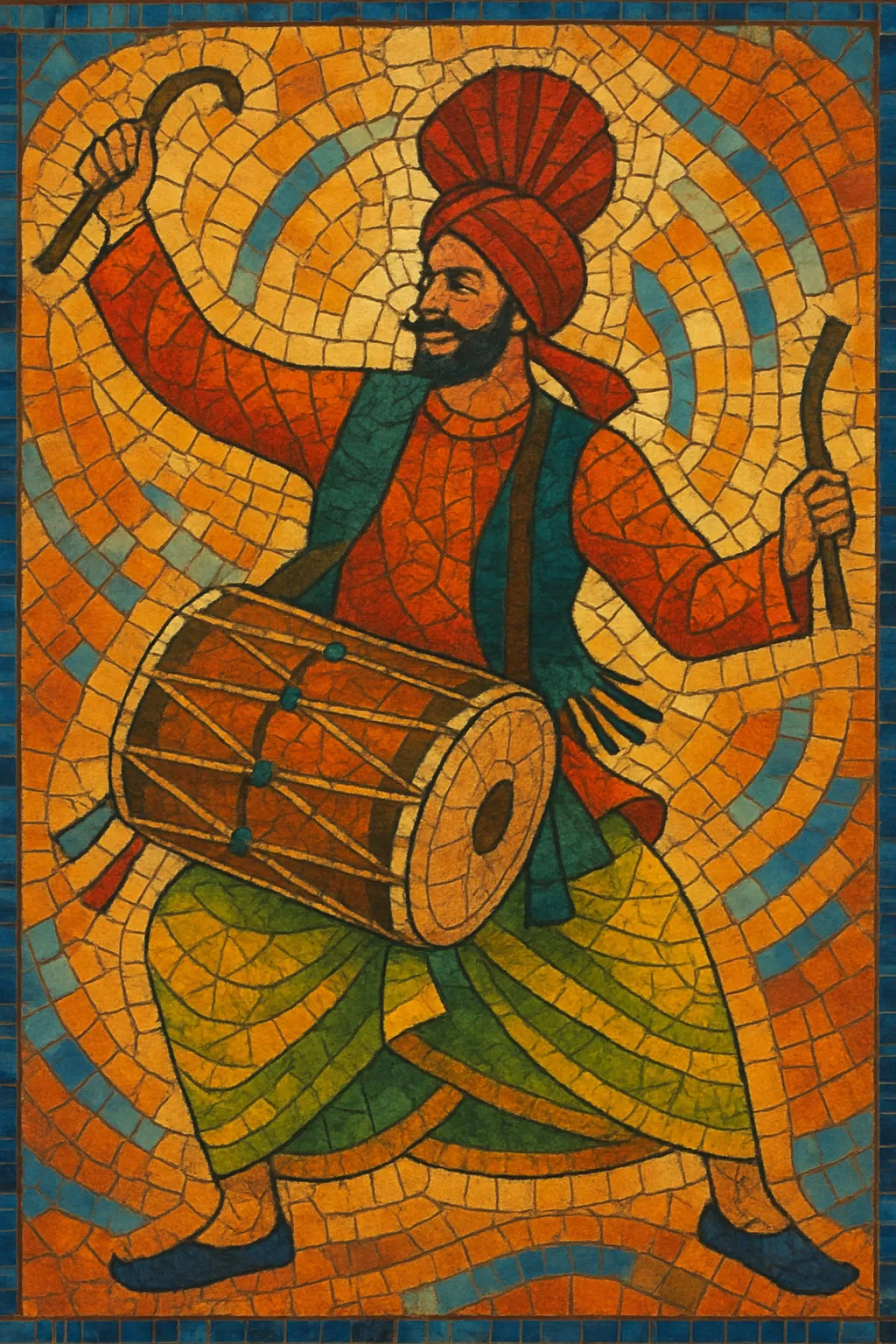Bhangra is a high-energy popular music style that modernized the traditional Punjabi harvest dance rhythms and instruments with Western pop, rock, reggae, and electronic production.
Emerging from the British South Asian diaspora, especially in England, it features pounding dhol patterns, catchy tumbi riffs, vibrant call-and-response vocals, and celebratory Punjabi lyrics. Since the 1990s, bhangra has crossed over into Bollywood, global pop, and club culture, spawning chart hits and fusions with hip hop and EDM while remaining rooted in Punjabi cultural identity.
Traditional bhangra began as a Punjabi harvest dance with dhol-driven rhythms and folk singing in rural Punjab (in present-day India and Pakistan). Its musical DNA includes Punjabi folk melodies, call-and-response choruses, and prominent use of instruments like the dhol, tumbi, and chimta.
The modern recorded genre took shape in the British South Asian diaspora, particularly in London, Southall, and the West Midlands (Birmingham), where second-generation musicians blended Punjabi folk with disco, funk, rock, reggae, and early electronic production. Pioneering bands such as Alaap, Heera, and Apna Sangeet brought amplified dhol, electric bass, keyboards, and drum machines into the mix, defining the upbeat, dancefloor-ready bhangra sound.
The 1990s saw a surge in production quality and global reach. Artists like Malkit Singh, Jazzy B, Sukshinder Shinda, Bally Sagoo, and Panjabi MC popularized bhangra internationally. Panjabi MC’s “Mundian To Bach Ke” (with its later Jay-Z remix) became a worldwide hit, while Bollywood increasingly incorporated bhangra rhythms and hooks. Producers fused bhangra with hip hop and R&B, birthing club-friendly hybrids.
Bhangra continues to evolve through collaborations with EDM and hip hop, slick digital production, and global streaming platforms. While Punjabi pop and rap have grown in parallel, bhangra’s core signatures—dhol-driven ‘chaal’ grooves, tumbi riffs, and communal choruses—remain central in festivals, weddings, and clubs, sustaining the genre’s role as a symbol of Punjabi joy and diaspora identity.


